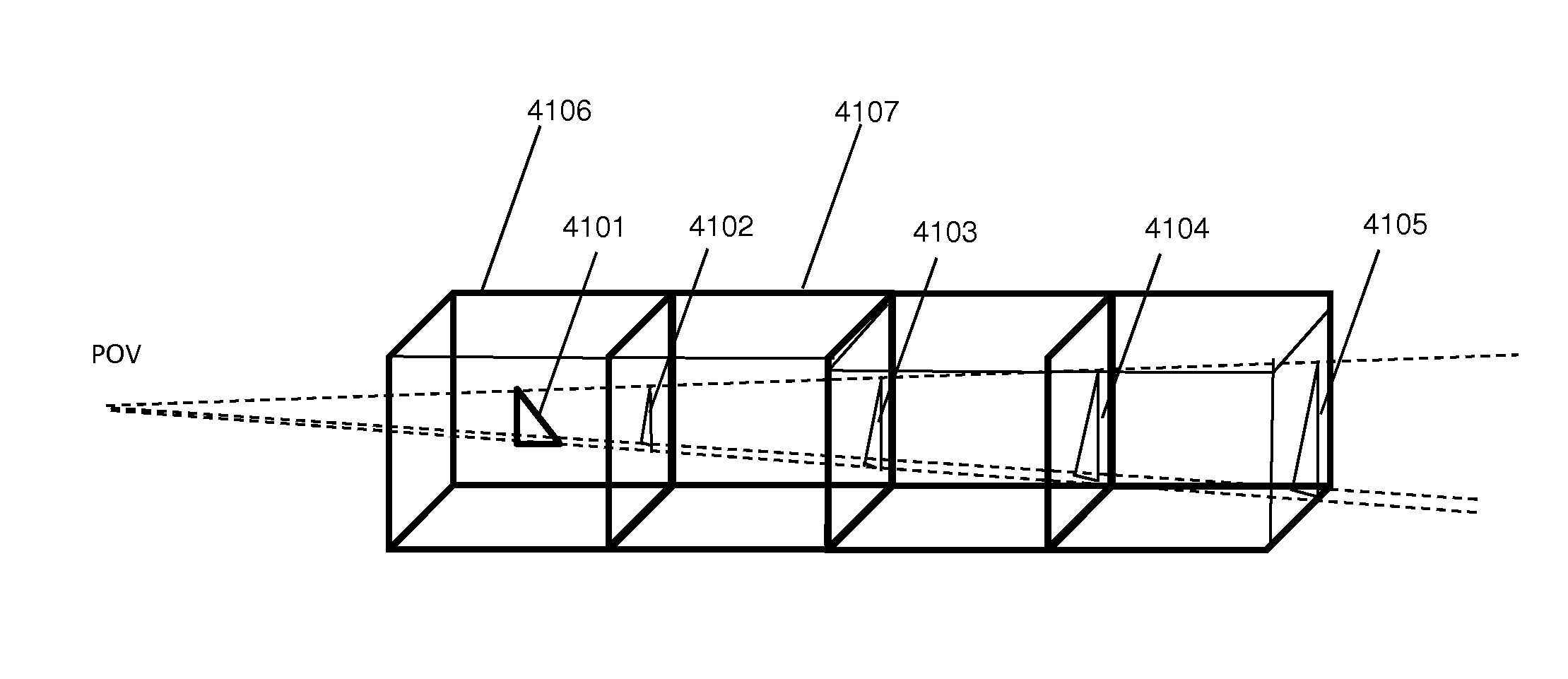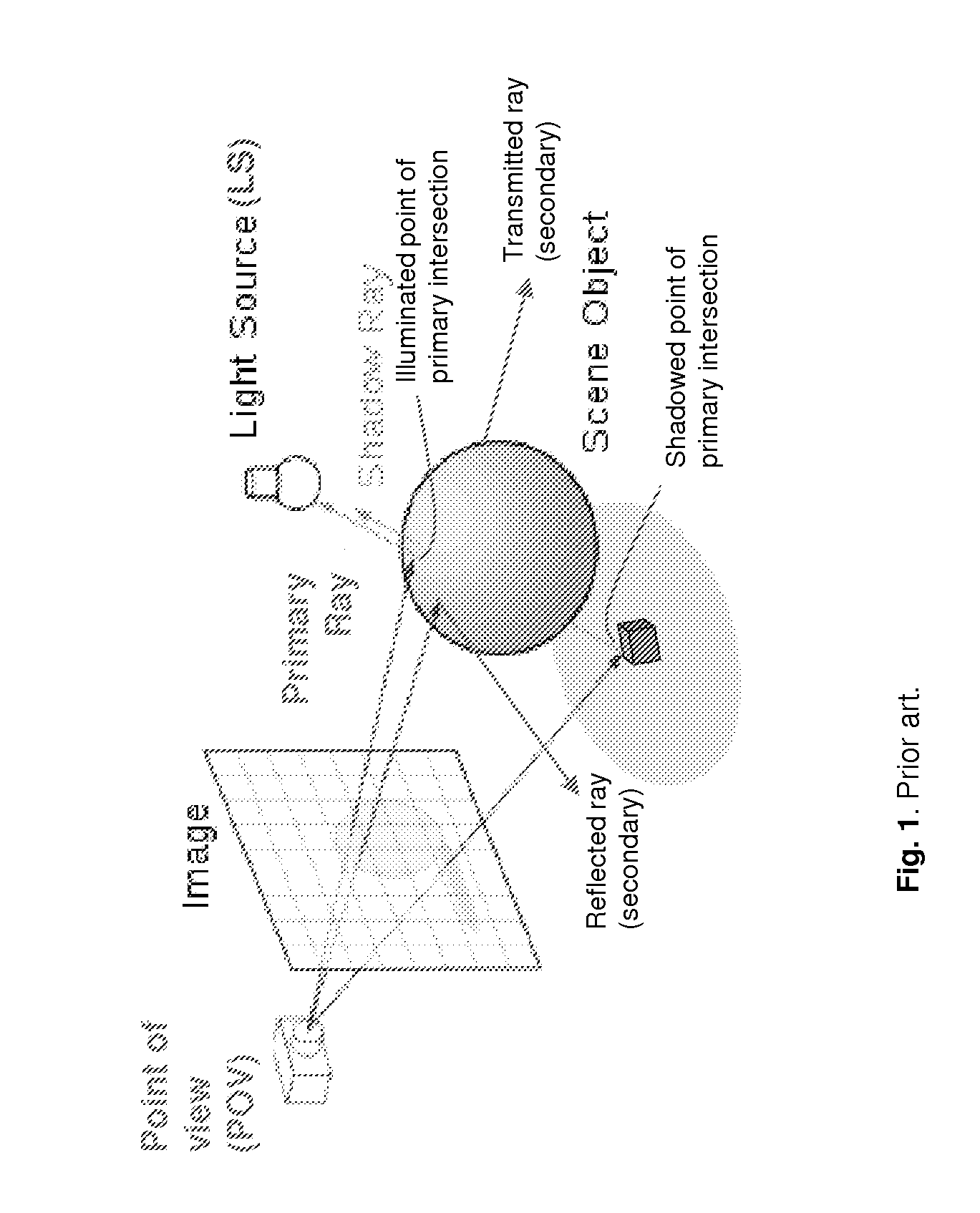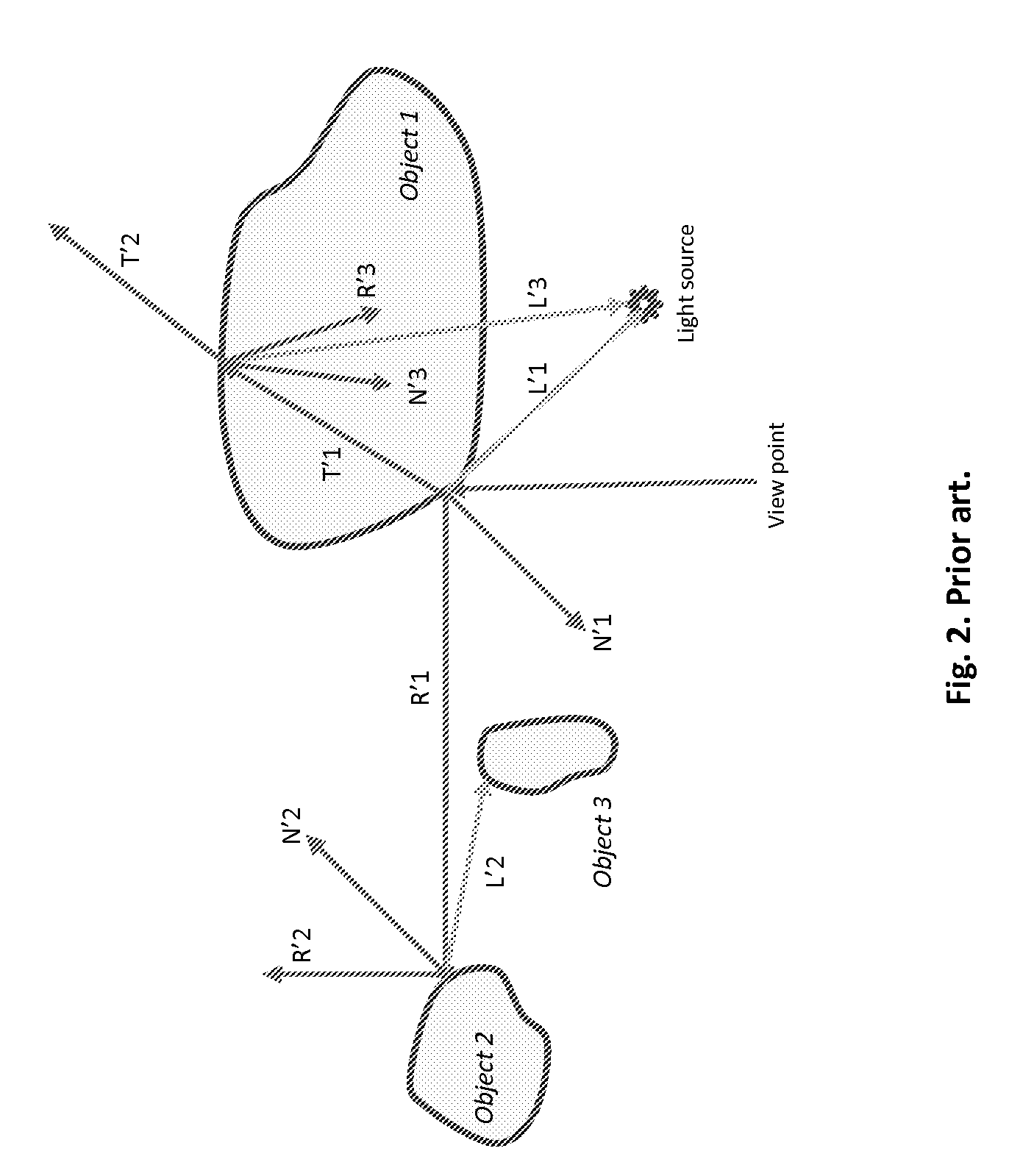Ray shadowing system utilizing geometrical stencils
a stencil and geometric technology, applied in the field of data-parallel ray tracing technology, can solve the problems of high computational cost of ray tracing algorithm, large amount of effort put into finding the best parallel decomposition for ray tracing, and large number of geometric data copies and multiplications, so as to reduce high traversal and construction cost, efficient ray tracing, and enhanced load balance
- Summary
- Abstract
- Description
- Claims
- Application Information
AI Technical Summary
Benefits of technology
Problems solved by technology
Method used
Image
Examples
implementation embodiments
[0193]Our stencil based algorithm can be efficiently implemented on a single processor systems, as well as on multiprocessor systems, general purpose processors, special purpose processors, multicore processors, and GPUs. These processors can be integrated in different computing systems such as single processor computing systems, parallel computers, PC-level computers, information server computers, cloud server computers, laptops, portable processing systems, tablets, Smartphones, and other computer-based machines. Although a sequential computing system is capable of performing our shadowing algorithm, however, parallel computing system would do it for larger models. Today, a typical classification by model size is to small models of up to few hundreds of polygons, medium models of up to a few millions of polygons, and large models of up to billions of polygons. Due to our enhanced load balancing, the performance scalability is linear to the number of participating processors. The m...
PUM
 Login to View More
Login to View More Abstract
Description
Claims
Application Information
 Login to View More
Login to View More - R&D
- Intellectual Property
- Life Sciences
- Materials
- Tech Scout
- Unparalleled Data Quality
- Higher Quality Content
- 60% Fewer Hallucinations
Browse by: Latest US Patents, China's latest patents, Technical Efficacy Thesaurus, Application Domain, Technology Topic, Popular Technical Reports.
© 2025 PatSnap. All rights reserved.Legal|Privacy policy|Modern Slavery Act Transparency Statement|Sitemap|About US| Contact US: help@patsnap.com



